Some Wealthy Chinese Are Shifting Away from European Couture Houses
July 07, 2019DMT.NEWS#DMTBarberShop
BEIJING, China — As the daughter of socialite and couture devotée Lisa Xia, Natasha Lau was exposed to the craft from a young age thanks to summer holidays spent in Paris. The same goes for her younger sister Eugenia, who made her couture week front row debut aged five.
“Couture is an investment for sure,” says Lau, an influencer who is taking a gap year from Parson’s to complete an acting course in Beijing and has worked on social media campaigns for the likes of Fendi and Hèrmes. “[Couture] is an art piece and you’re the only one in the world who has it.”
Couture shows have become an important gathering ground for wealthy Chinese scions and celebrities. At the shows, Lau rubs shoulders with the likes of actress Tian Hairong, socialite Min Lu and Yu Holdings Chief Executive Wendy Yu.
Chinese celebrities have also become mainstays at couture shows and continue to spotlight European luxury for their fans at home. Earlier this week at Christian Dior, super model He Sui, Hong Kong actress Carina Lau and mainland actress Vivien Li were spotted at the house's atelier in Paris, while actress and Chanel ambassador Zhou Xun was photographed at the brand’s library show set in the Grand Palais the day after.
But 10,000 kilometres from Paris’ esteemed ateliers, China’s own couturiers are serving a different group of exacting and elusive couture clients — a revenue source that European houses have been neglecting.
For jet-setting clients like Xia and Lau — whose acting programme is breaking a three-year couture week streak — couture is inseparable from its French roots. To qualify as an haute couture house, designers must comply with the Fédération de la Haute Couture et de la Mode’s rules, which include designing made-to-order clothes for private clients with more than one fitting, to hiring at least 15 fulltime staff.
“Haute Couture is first and foremost the ultimate luxury, the ultimate service,” a spokesperson from Chanel tells BoF. “It expresses the best of fashion since it’s made personally for the client and is all about perfection.” Aside from showing in Paris, Chanel and other luxury houses hold presentations and fittings around the world to cater to their increasingly global clientele – including China.
No price is too high when it comes to having the chance to own something nobody else has.
Chanel’s couture consumers are getting younger and younger, says the brand’s spokesperson. “They want a garment that is made only for them, that they won’t see on other women.”
Take Lau, who at twenty-one, has already amassed an impressive collection, from a purple floor-skimming Valentino cape, to a body-hugging Giorgio Armani number dripping in Swarovski diamonds. Such pieces were purchased for upwards 100,000 euros (around $112,700), “but that’s a low average,” she says. Lau and Xia are partial to Dior, Armani, Schiaparelli and (pre-China boycott) Dolce & Gabbana, and would often place one order each per five to six brands during past mother-daughter couture week jaunts.
“Whether it’s a tailored Saville Row suit or a special-order Birkin, no price is too high when it comes to having the chance to own something nobody else has,” says Hong Kong Tatler’s Society Editor Christian Barlow.
Levelling Up in Luxury
The rise of social media, increasingly deceptive counterfeits and a desire to stand out from the crowd means that exclusive, made-to-measure is a way to trade up for a growing number of Chinese clients who have become bored of ‘ordinary’ luxury brand goods. “Many are recognising the appeal in buying couture or bespoke products,” says Barlow.
However, not all customers trade up from ready-to-wear luxury to couture in a single leap. Instead, some Chinese customers have turned to homegrown couturiers after they have become disillusioned with European houses’ ready-to-wear offerings. And who better to serve them than China’s couture trifecta: Yang Fang of By Fang Atelier, Grace Chen and Guo Pei, who designed Rihanna’s famed 2015 Met Gala “omelette” gown.
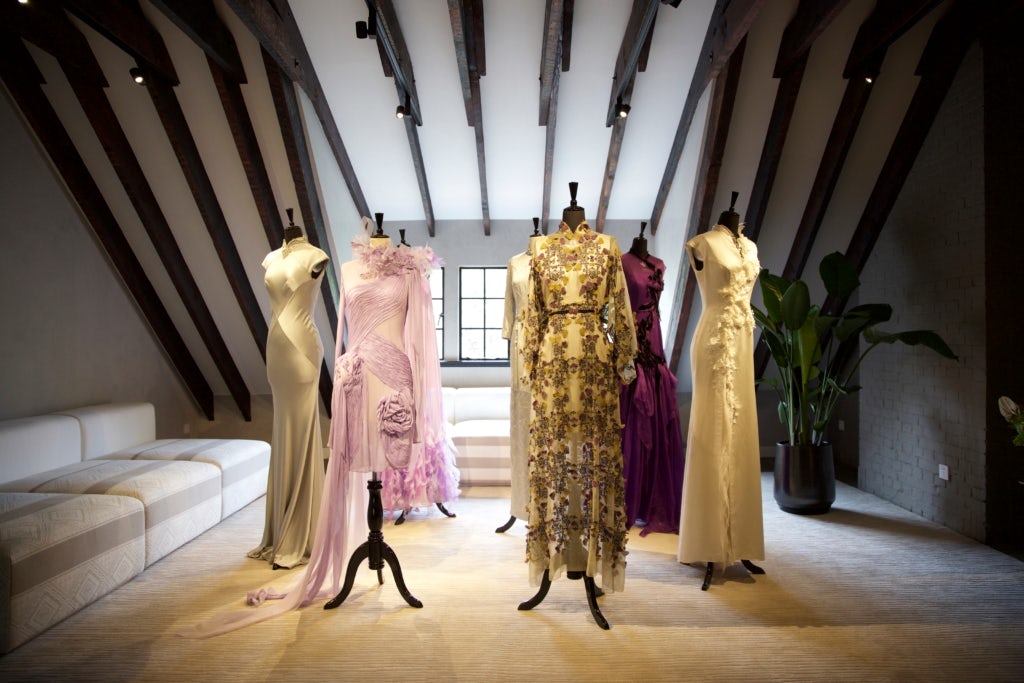
Grace Chen's Shanghai atelier | Source: Courtesy
Yang Fang has operated both ready-to-wear and couture lines in Shanghai since 2013, but the latter — named Atelier by Fang — has grown into a reliable source of revenue, leading to the opening of a three-story couture atelier and salon in the city’s former French concession last year. “I always find clients very excited to discover a new proposition outside the established luxury labels which already take [up] a large place in their wardrobes,” Fang tells BoF.
“We’ve really captured the post-luxury market,” says Chen, who graduated from New York’s Fashion Institute of Technology, having established her atelier a decade ago and dressed the likes of Oprah and China’s First Lady Peng Liyuan. Over 90 percent of Chen’s clients are Chinese, and though the designer has noticed an increase in local millennial clients, most of them are between ages of 35 and 45.
“Most of my customers were the first luxury customers in China and started buying Chanel and Dior 20 years ago. They need something more than that now, because [luxury] ready-to-wear is too accessible and isn’t personal anymore,” she adds, adding that Chinese customers who are increasingly veering away from overtly-branded luxury goods find couture to be a subtler alternative. Chen’s couture gowns are priced upwards of $12,600, while trousers sell for $2,500 or more.
The clients of China’s own couturiers are a more elusive bunch than those of European fashion houses. High profile players have sported Chen’s designs — from Trends Media Group’s former Chief Executive Su Mang to the wife of China’s Premier Li Keqiang, allegedly — but Chen notes that most of her clients are successful female entrepreneurs and businesswomen. While some Chinese clients do of course flutter in high society circles, many others desire couture for other occasions – often more professional or leisurely in nature.
Though it is unclear just how many would-be Chinese couture clients are foregoing European houses, the growing cohort of wealthy local women turning to local couturiers for their made-to-measure needs speaks volumes.
Most of my customers were the first luxury customers in China and started buying Chanel and Dior 20 years ago. They need something more than that now.
Take Jun Wei, a lawyer and chair of Hogan Lovell’s Greater China practice, or Lyn Huang, a spa consultant and investor living between London and Shanghai. “I used to buy a lot of European brands such as Dior and Chanel and felt beautiful and fashionable, but I didn’t feel that was me,” Jun tells BoF. “It’s been a long journey to find a brand in which I feel so comfortable.”
It’s also a matter of accessibility. Thirty-nine-year-old Huang has also purchased couture from European brands but prefers Chen’s approach. “Grace’s [services] are more personalised and she will spend time to talk to me about what I need…she’s also more efficient on delivery.” What's more is that older clients and businesswomen aren't always able to fly to Paris and Milan for couture shows, and the language barrier can be an obstacle for those looking for a one-on-one with a designer.
Paris-based Alexis Mabille is seeing his haute couture purchased by an increasingly global audience. And while couture now accounts for 35 percent of his business overall, Chinese shoppers make up a mere 3-5 percent of his couture clientele. Compared to the 10 percent for his ready-to-wear business in the region, this is small.
Celebrities Zhou Dongyu, Crystal Zhang, Deng Jiajia and Ali Lee are but a few Chinese starlets who have sported Mabille’s “Kurkova” gown. Red carpet styling and front row appearances can help brands raise awareness but attracting the ultra-wealthy to buy one-of-a-kind couture is another matter.
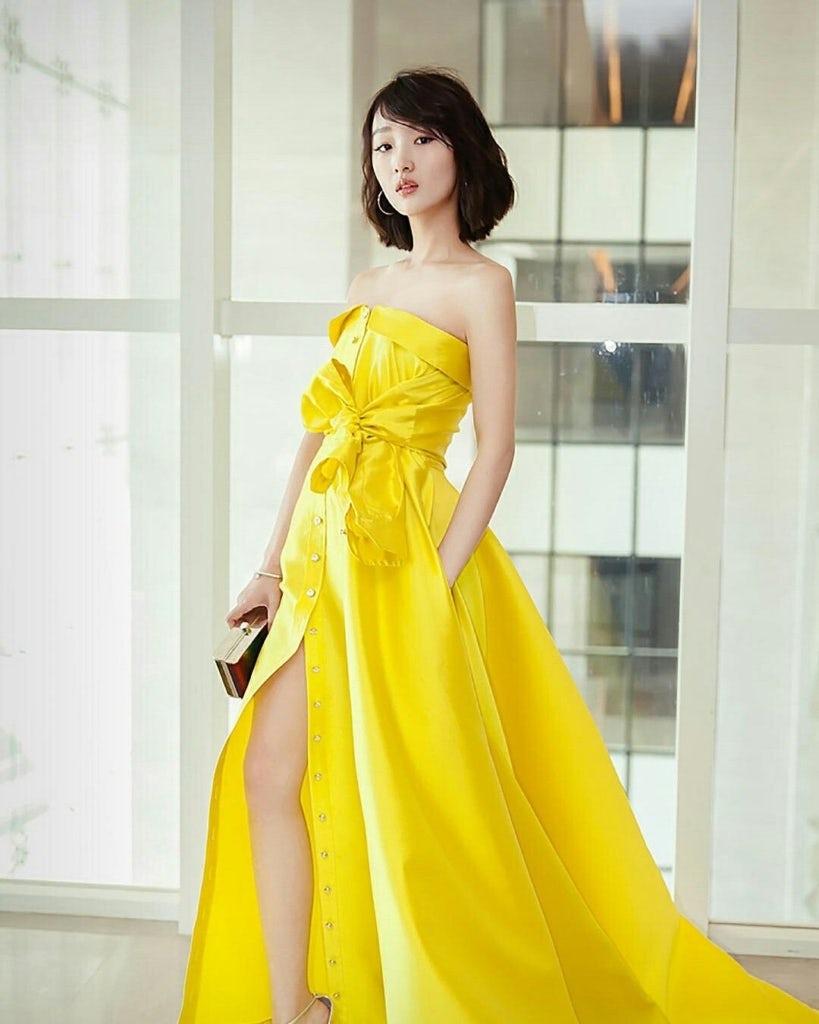
Zhou Dongyu in Alexis Mabille | Source: Courtesy
The designer notes that compared to customers from other regions, Chinese clients are often more impatient with the waiting time which can be up to three months for a gown. “Sometimes they don’t want to wait for the whole process. They like the idea of haute couture and the feeling, but they’re fast consumers.” As such, he has on occasion rejected requests as his team can’t complete the garments within the desired timeframe.
Local Appeal
Huang reckons that Chen’s atelier has become popular with women like herself because her clients “have a network of ‘she power’ in Shanghai” — meaning word of mouth recommendations and patronage from established working women.
“These women are very picky, and they already have the best things in the world, so you have to be better. You have to be better than the Chanel suit or McQueen jacket they already own,” says Chen.
The designer reckons that an acute understanding of Asian sizing and body types is her main advantage over European couture houses, and she recalls many instances of helping a long-time client “fix” Armani couture suits and dresses. However, she sees the chasm as cultural. “Westerners don’t have the same aesthetic ideals as Asian people, and it’s not something they can understand or fix.” says Chen.
Leanne Lam, a Hong Kong-based founder of an events management company, concurs. Though Lam has placed orders with European couture brands in the past, she reckons that European and Chinese couturiers can have different approaches, aesthetics and cater to different audiences. “If there is an occasion where I need a classic tweed jacket, I’ll visit [Chanel],” she says.
You have to be better than the Chanel suit or McQueen jacket they already own.
“[But] perhaps because of my background, I can relate more to Grace’s creations…they bring out the best features in Asian women.”
Fang also reckons that her Chinese clientele returns to her studio for cultural reasons. “They enjoy being around Chinese speaking craftsmanship teams who are available in the house and definitely feel more genuinely understood in their personality and their tastes when connecting with me.”
Personal Preference
Yet, Chinese demand for couture extends far beyond the consumers sitting front row at Armani and Dior. And as the country’s consumers opt for increasingly personalised luxury experiences, Yang, Peng and Guo’s couture ateliers are really just the tip of the iceberg.
Though not all of them boast the couture moniker, designers providing bespoke and made-to-order services with traditional Chinese craftsmanship are supplying local demand for one-of-a-kind fashion. Beijing-based Guo, for one, operates both a couture line and her Rose Studio, which focuses on realising bespoke pieces for local clients.
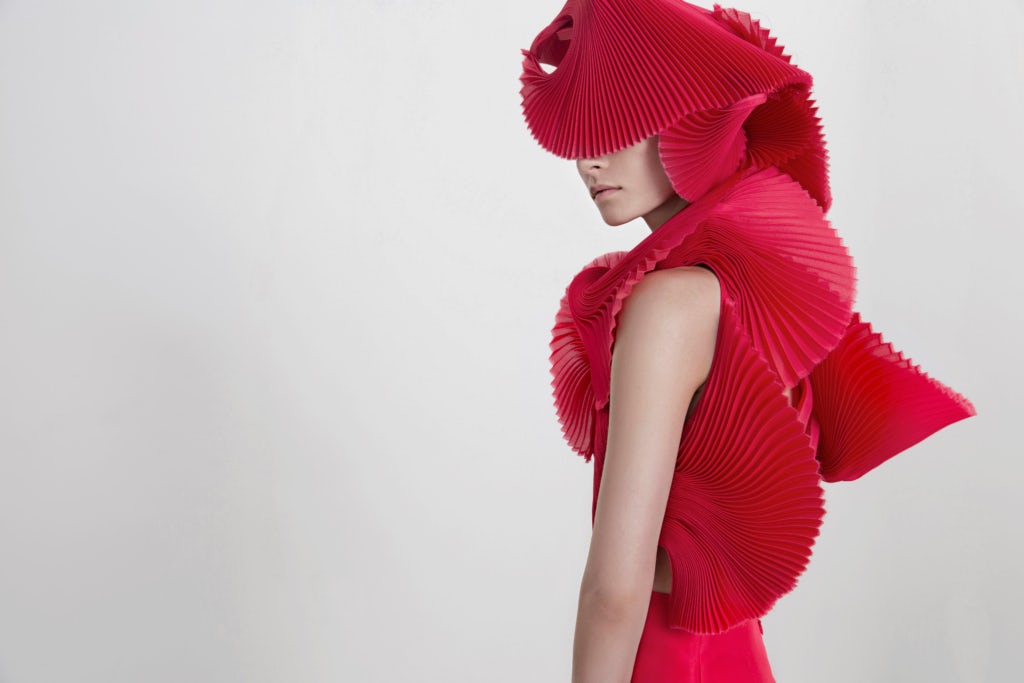
A look by Atelier by Fang | Source: Courtesy
“Customisation isn’t just for couture luxury consumers anymore,” says Liz Flora, editor of APAC research at Gartner L2. Flora has noticed an uptick in brands offering personalisation options for ready-to-wear in China, with the percentage of brands posting about product customisation on social media platform Weibo almost doubling from 24 percent in last year’s first quarter to 44 percent this year.
According to McKinsey & Co’s latest report on Chinese luxury consumption, personalised experiences and products are driving China’s luxury consumption both online and offline. Even for brands that fall outside of couture or bespoke brackets, tapping into this growing desire to feel unique and valued is key to standing out in the increasingly crowded market.
And like the wider luxury sector, Chen believes that China is shaping up to be a couture consumption driver beyond the society pages. “Paris will still be the industry centre, but China is going to be a main driving force for consumption, though maybe not as much as ready-to-wear,” she says. “The Chinese aspire to own the best things in the world. Couture is definitely part of that equation.”
And yet, something’s missing. “There is certainly a feeling that [Chinese clients] are less exclusively and genuinely taken care of,” says Yang, who reckons such clients ultimately just want to be respected as trend-defining stakeholders.
“I still believe that the key European couture brands deserve an infinite respect,” Fang tells BoF. “[But] being aware of the true identity of their clientele and perhaps giving an impression of being more open-minded is an evolution which may be more and more needed.”
时尚与美容
FASHION & BEAUTY
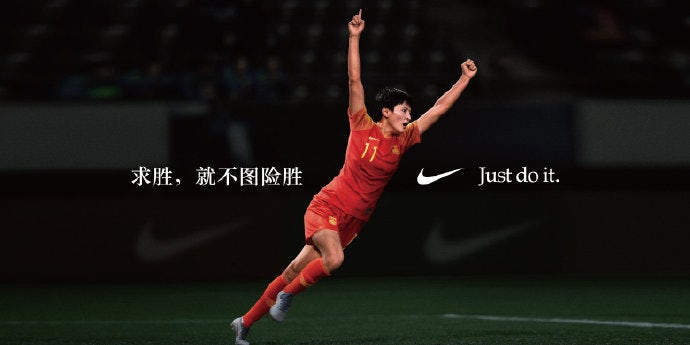
Nike China's Women's World Cup Campaign | Source: Nike
Nike’s Greater China Revenues Exceed $6 Billion For the First Time
In the wake of cancelling the sale of its limited edition Undercover collaboration in China and receiving criticism for its allegedly racist sneakers, Nike released its latest fourth quarter earnings. On June 28, Nike announced that revenues in Greater China reaching $6.2 billion — a 24 percent year-on-year increase from 2018’s $5.134 billion. During an investor’s call, Chief Financial Officer Andy Campion said that the company wasn’t seeing any impact from the US-China trade war, adding that Nike will continue to make products in China, which supplies around a quarter of its products globally and is also the brand’s fastest growing market. (CE)
Chinese Investor Vies for Sonia Rykiel
A Chinese investor is reportedly one of three potential investors eyeing the 57-year-old French brand, which is searching for a new owner after filing for the French equivalent of Chapter 11 bankruptcy protection in April following several rounds of layoffs and corporate restructuring. The other two bidders are former Balmain Chief Executive Emmanuel Diemoz and an unnamed Parisian family operating in real estate and medicine; the three parties were selected from a group of nine bidders, who were reviewed during a closed-door hearing on Monday morning. The Chinese investor has never acquired a French brand before is still in the process of completing due diligence, and the deadline for final bids is set for July 18. (BoF)
Chinese Beauty Consumption To Trump That of North and Latin America, Combined
According to data from Euromonitor, China is the fastest growing beauty market in Asia, while Asia already accounts for a third of the global market. While the sector’s growth in North America and Europe is slowing, the mainland’s beauty consumption is slated to exceed that of North America and Latin America combined in the next four years. While China’s first and second-tier cities are still seeing growth in this segment, lower-tier cities harbour more potential. According to local e-tailer Vipshop’s data from the last five years, the number of foreign beauty products purchased by Chinese users in third and fourth-tier cities has been significantly higher than that of shoppers in first and second tier cities. (Jiemian)
科技与创新
TECH & INNOVATION
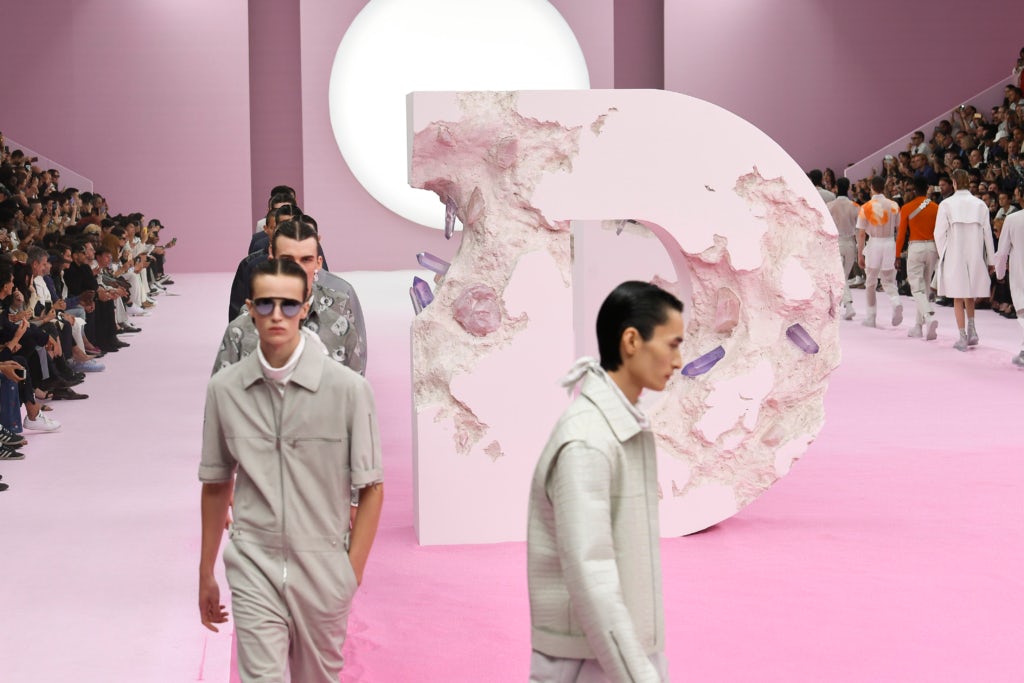
Dior Men Spring/Summer 2020 | Source: INDIGITAL
Dior, Moschino Collaborate With Chinese Phone Giants
European luxury brands are getting cozy with Chinese tech giants in an effort to better target the mainland’s high end consumers. On June 21, Huawei and Dior linked arms to broadcast the French luxury brand’s Spring/Summer 2020 men's runway show on Huawei’s video and music platforms, making Dior the first luxury player to cooperate with the Chinese telecom and smartphone giant. Days later, another Chinese phone maker Honor announced the launch of its collaboration with Italian brand Moschino: a co-branded version of the Honor 20 Pro smartphone that became available for purchase on July 2. (BoF China)
Xiaohongshu Denies Funding Rumours
Millennial China’s favourite social e-commerce platform has denied rumours of an ongoing $50 million funding round. This month, The Information alleged that the tech company was in talks with Softbank's Vision Fund, Sequoia Capital and Gaochun Capital and could be valued at up to $6 billion, but Xiaohongshu has since refuted the news. Last June, the company announced the completion of a $300 million Series D round of financing led by the likes of Alibaba and Tencent, but it isn’t slowing down: On June 6, Founder Miranda Qu and Chief Executive Charlwin Mao celebrated Xiaohongshu’s sixth anniversary and announced that the platform’s monthly users has exceeded 85 million, with a total user base of 250 million. (Beijing News)
Alipay To Launch Beauty Filter for Smart Payment Tools
In a bid to boost female usage of its one-billion-user e-payments arm, retail and tech giant Alibaba is introducing a beautifying filter for its facial recognition payment system. Starting next week, the filter will be automatically applied at “Smile to Pay” tills when users scan their faces to make purchases. Recently, Alipay posted on Weibo that many of its female users opt out of using facial recognition to pay because they find the images on machine screens unflattering. The news drew many comments online, where netizens said they felt self conscious about their looks when seeing their faces on display. (Technode)
消费与零售
CONSUMER & RETAIL
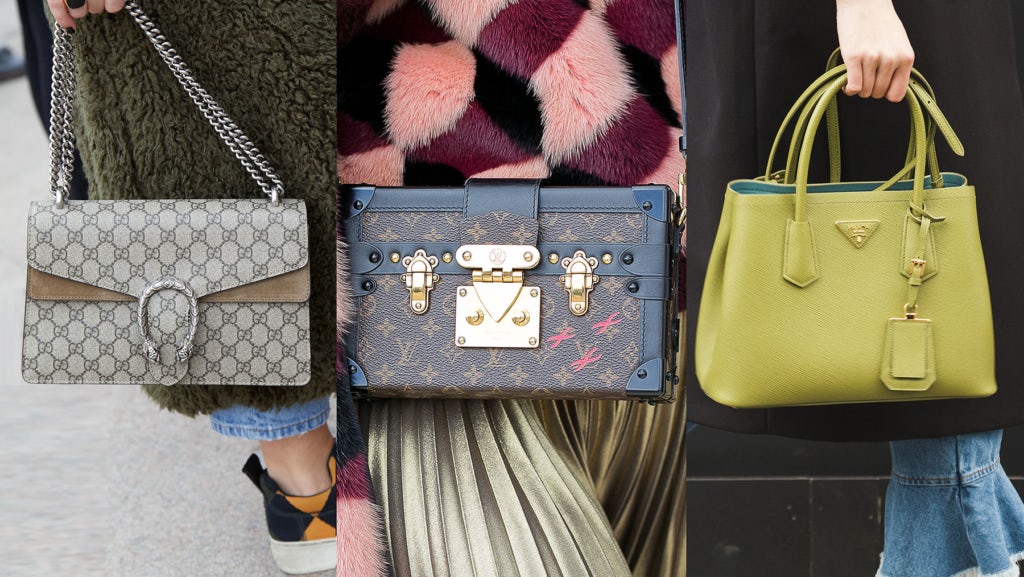
From left: Louis Vuitton 'Petite Malle'; Gucci 'Dionysus'; Prada 'Galleria' handbags | Source: Shutterstock
A Lack of Exclusivity Is Hurting Top Luxury Brands
According to Bernstein Research, brand awareness, desirability and perceptions of exclusivity are continuing to evolve in the Chinese market. While consumers’ increasing awareness of niche brands is a sign of the mainland’s maturing soft luxury market, established luxury players such as Louis Vuitton, Gucci and Prada are losing ground to the high-end players such as Moncler, Versace and Bottega Veneta. Though Chanel, Louis Vuitton, Gucci Prada and Dior are still leading in awareness and desirability, a decline in perceived exclusivity has led them to lose ground over the last four years. (Bernstein)
L.A.’s Luxury Stores See Decline in Chinese Tourist Spending
Thanks to Beijing’s bids to encourage luxury spending at home, Los Angeles’ luxury stores are feeling the loss of Chinese tourist spending. Since bringing $1.5 billion to the city in 2016 alone, Chinese visitation to the city has slowed, dropping from 20 percent growth in 2016 to less than 7 percent in 2018. What’s more is that tourists are getting savvier with their itineraries, and are increasingly choosing to “live like a local” and opt for unique experiences over stopping by Rodeo Drive and Melrose Avenue. And other destinations — save for the likes of Paris and Milan, where the shopping itself is a cultural experience — are likely to see declines for the same reason. (LA Times)
Tmall Launches English Portal In Global Push
Alibaba isn’t being subtle with its ambitions for global domination. In a move expected to double the number of foreign brands on its e-tailer Tmall, the group has launched an English language portal for the site. If all goes to plan, Tmall Global will boast 40,000 global brands in three years, up from the current 20,000. Just last month, the e-commerce giant announced forecasts that in spite of US-China trade war tensions, China’s sovereign debt problem and financing bottlenecks for the private sector, the company’s annual revenue will surpass $72.7 billion this fiscal year. (BoF China)
政治、经济、社会
POLITICS, ECONOMY, SOCIETY
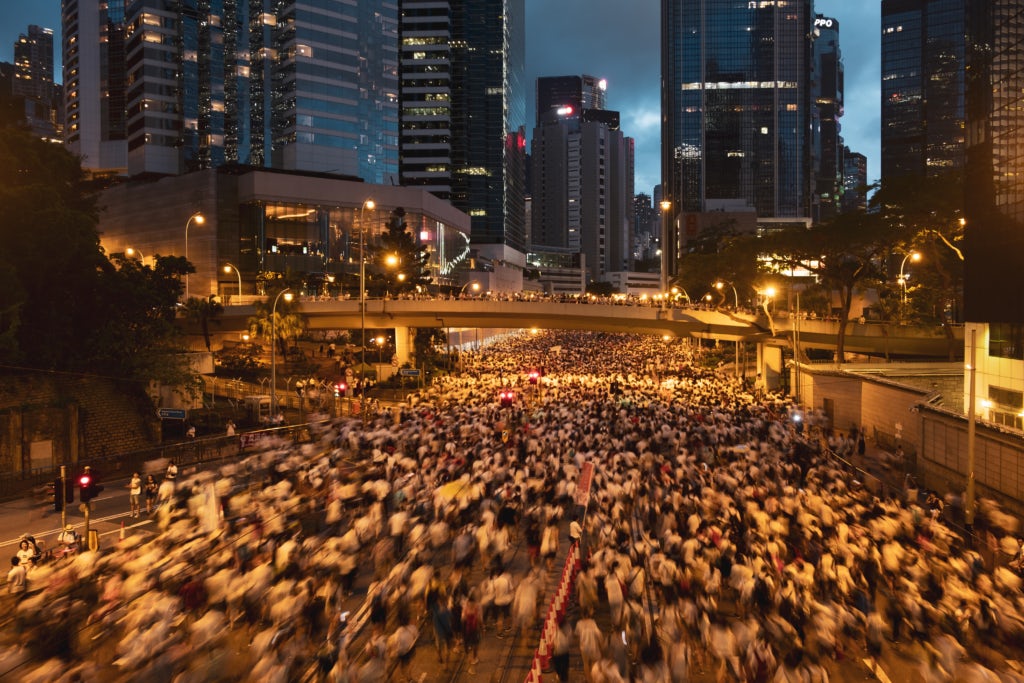
Protestors demonstrate against controversial extradition law in Hong Kong | Source: Shutterstock
Hong Kong’s Acts of Protest, Decoded
On July 1 — the 22nd anniversary of Hong Kong’s handover to Chinese rule — hundreds of activists stormed the city’s legislative building, and demanded the government unequivocally withdraw its contentious extradition bill. The protestors' violent actions were also symbolic: they spray-painted Hong Kong’s official emblem black (covering the bauhinia flower and characters “People’s Republic of China,” leaving “Hong Kong Special Administrative Region” untouched), while others tore apart a copy of the Basic Law: the city’s constitutional document enshrining freedom of speech, assembly, and a promise that the city’s Chief Executive will eventually be selected by universal suffrage — a promise that Beijing has reneged on for years. (Inkstone)
Shanghai Unveils the World's Largest Trash Incinerator
Shanghai generates more than 9 million tons of garbage a year and like most Chinese cities, lacks a municipal recycling system. The city is looking to fix that by introducing ambitious trash sorting rules effective this week, alongside the launch of Shanghai's Laogang Renewable Resource Recycling Centre, which will be the world’s largest incinerator and be able to burn up to 3 million tons of waste a year. The government is using social media and newspapers to educate consumers and tourists on trash sorting, hoping that unlike its failed attempt to introduce a recycling system in 2000, this one will stick. If successful, Shanghai's model could change the way China and the rest of the world gets rid of waste, but only time will tell whether billions in investment will pay off. (Caixin, Bloomberg)
Chinese Employers Banned From Asking About Female Applicants’ Marital or Childbearing Status
Though China’s female labor force participation rate hit an impressive 61 percent in 2018, a 2015 study found that over 87 percent of female university graduates experienced gender discrimination during the hiring process. In a bid to promote equality in China’s job market, Beijing has introduced new rules prohibiting employers from asking female job candidates about their marital or childbearing status. The change had already been noted in official documents in February, but posts went viral last week after Xinhua reported that the reform also eliminates gender specifications in recruitment plans or interviews, and nixes pregnancy tests from pre-hiring examination lists. Online reactions have been mixed, with some commentators expressing support for the change, while others are dubious that the new policy will correct deeply rooted gender biases. (What's on Weibo)
China Decoded wants to hear from you. Send tips, suggestions, complaints and compliments to zoe.suen@businessoffashion.com.
DMTBeautySpot
via https://DMTBarberShop.com
Zoe Suen, Khareem Sudlow


0 comments